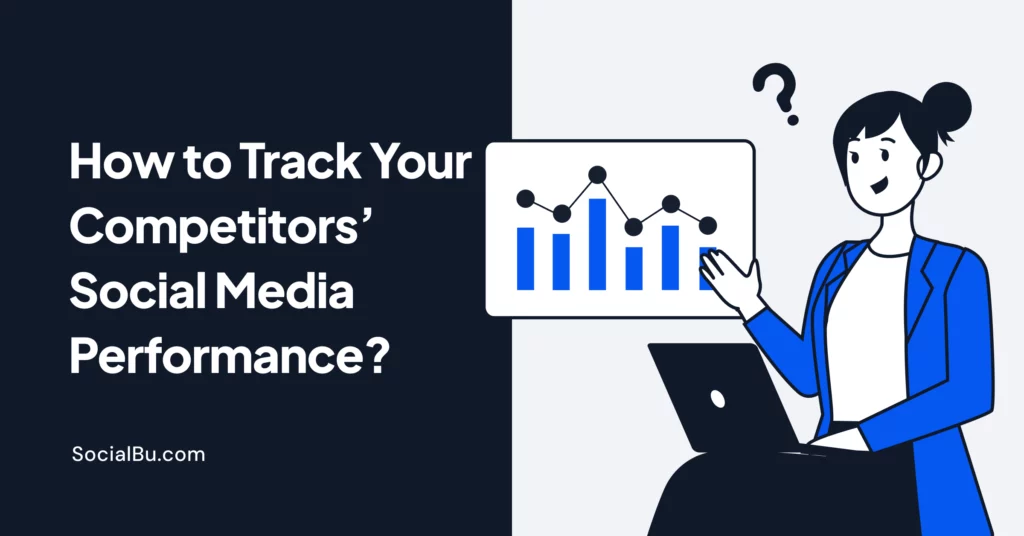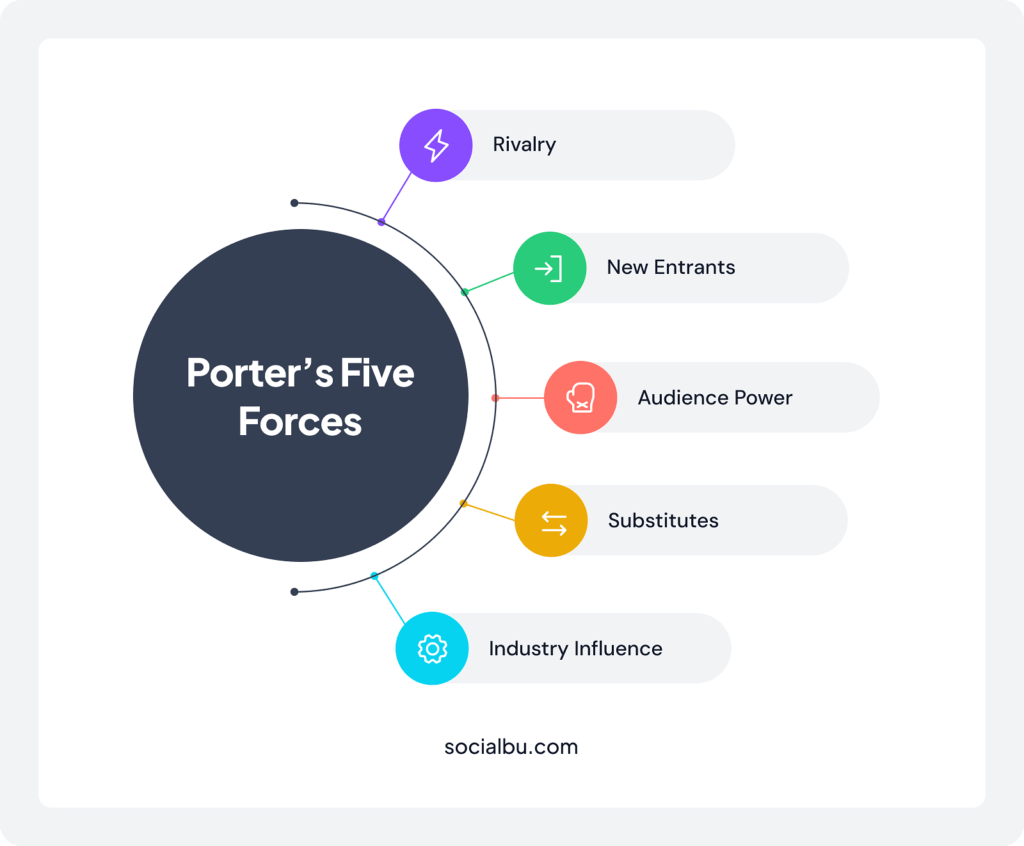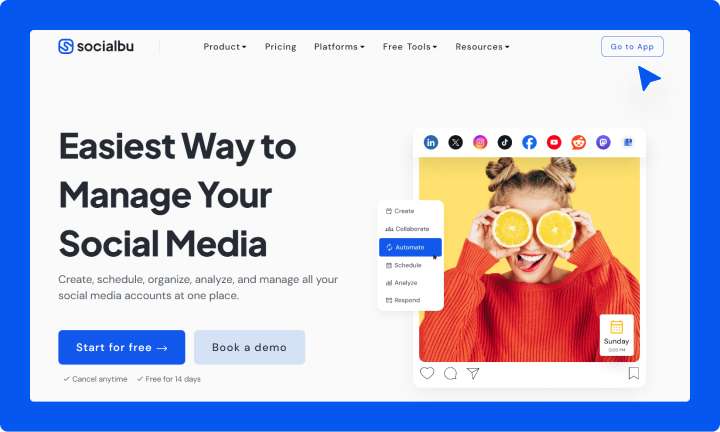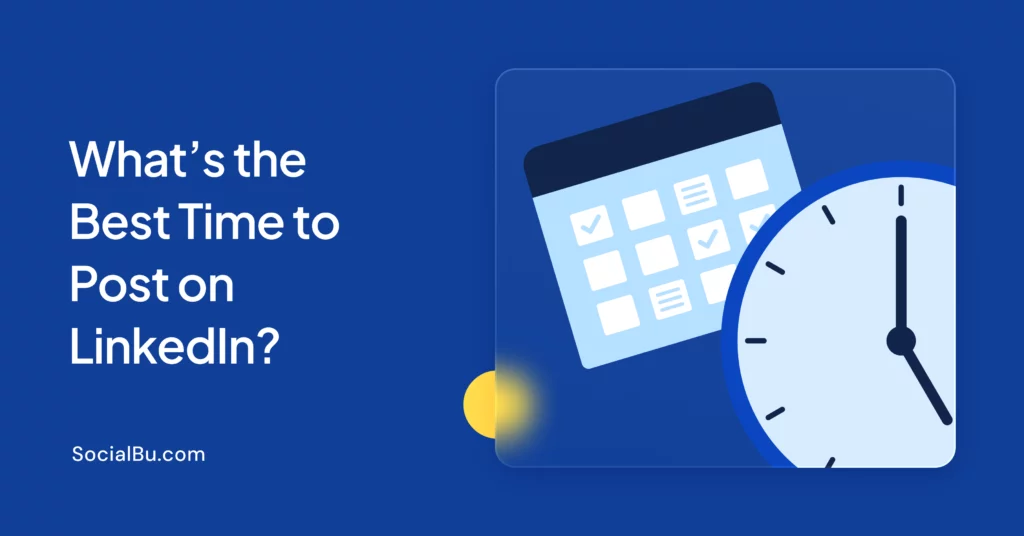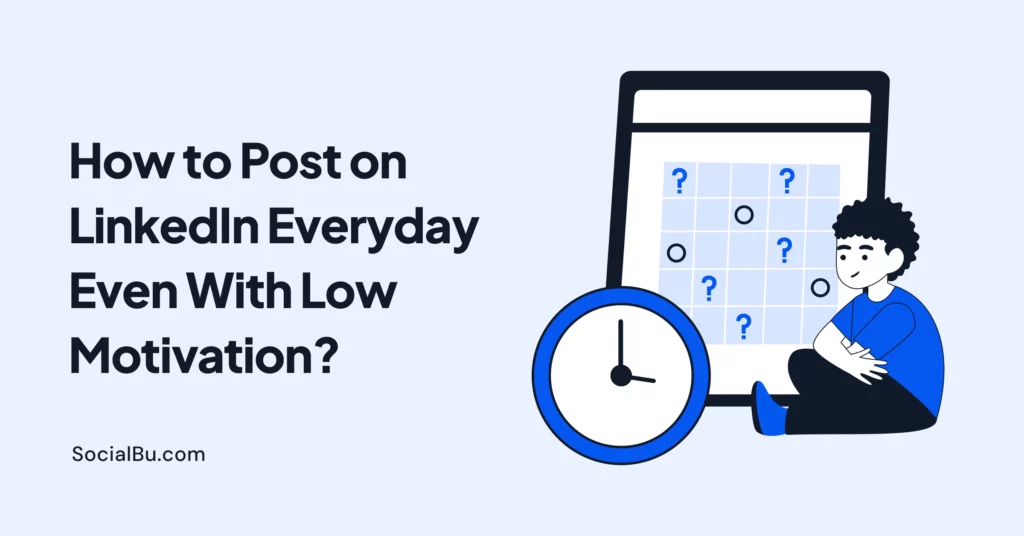Are your competitors getting all the attention while your engagement stalls? Here’s how to change that. You need to track competitor social media performance if you’re a social media manager, a startup founder, or a marketing manager. Social media competitor analysis is the process of monitoring and evaluating your competitors’ strategies to improve your own.
By monitoring their activities, you can uncover effective tactics, spot gaps to exploit, and boost your brand’s presence.
In this blog, you’ll learn why it’s crucial to spy on competitor social media campaigns, how to monitor competitors on social media, and the best tools to track competitor social media performance.
So, without any further ado, let’s go in!
Why Track Your Competitors on Social Media?
Tracking competitor social media isn’t just about curiosity—it’s about staying competitive. You can gain insights that shape your strategy by analyzing competitor social media content. Here’s why it matters: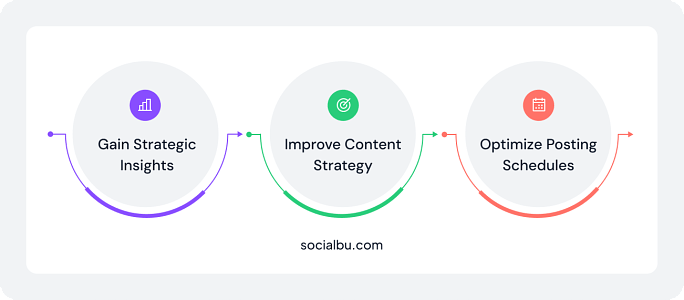
- Gain Strategic Insights: Watching your competitors’ moves reveals their strengths and weaknesses. For example, you might notice they’re killing it with Instagram Reels, prompting you to up your game.
- Improve Content Strategy: By studying competitor social media strategy, you can identify resonant content types. For example, their infographics might get tons of shares, inspiring you to create your own.
- Optimize Posting Schedules: Monitoring competitor post frequency and timing helps you find the best times to reach your audience. Test that slot yourself if they post at 7 PM and get high engagement.
Moreover, competitor benchmarking in social media lets you measure your performance against theirs, ensuring you’re not falling behind. Next, we’ll look at how to pinpoint who your competitors are.
How to Identify Your Social Media Competitors
Before you can track competitor social media, you need to know who you’re up against. Social media competitor analysis starts with identifying direct and indirect competitors.
Direct competitors offer similar products or services, like Nike versus Adidas. Indirect competitors target the same audience with different offerings, like a yoga studio versus a meditation app.
Here’s how to find them: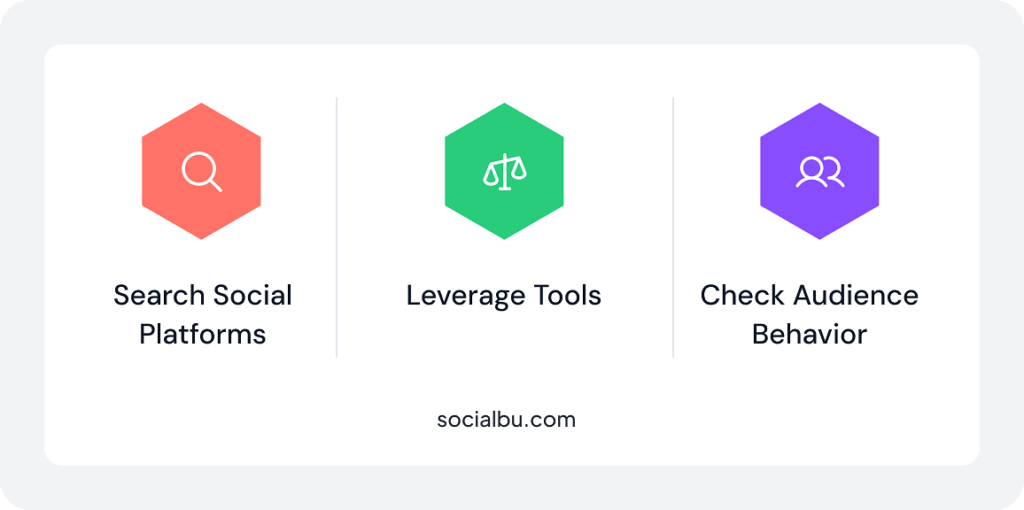
- Search Social Platforms: Use hashtags or keywords on Instagram, X, or LinkedIn to see who’s active in your niche. For example, search #FitnessGoals to spot fitness brands.
- Leverage Tools: Tools like SocialBu identify competitors based on audience overlap or industry keywords.
- Check Audience Behavior: Look at who your followers engage with or mention in X posts. This reveals brands competing for attention.
How to Track Your Competitors’ Social Media Performance: Step-by-Step Process
Ready to analyze your competitors’ approach? Follow this six-step process to track competitor social media performance and turn insights into action. It’s straightforward and effective for competitor benchmarking in social media. 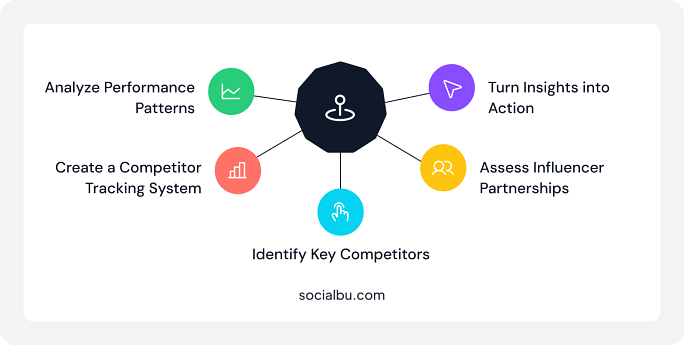
1. Identify Key Competitors
Firstly, when tracking competitors, identify them as a part of the campaign. Start by picking 3-5 competitors to focus on. Mix direct and indirect competitors for a complete picture. Use tools to track competitor social media or manually check hashtags and “suggested accounts” on platforms.
Additionally, create a spreadsheet to log their profiles and platforms. This will set the foundation for your social media competitor tracking tools.
2. Create a Competitor Tracking System
A tracking system keeps your data organized. Use top-tier social media competitor tracking tools like SocialBu to build a dashboard. Track metrics like engagement, follower growth, competitor hashtags, and mentions.
Incorporating a competitor content audit into your process helps you evaluate what types of posts are working for your rivals and where there are gaps you can exploit.
Additionally, set up Google Alerts for real-time updates or follow their X accounts. Automation saves time and ensures you don’t miss anything.
3. Analyze Performance Pattern
Now that you have set up a competitor tracking system, dig into their performance. Analyze competitor social media content to spot top-performing posts, like videos or carousels. Check engagement metrics—likes, comments, shares—to see what works.
Moreover, competitor post frequency and timing should be monitored for optimal posting windows. For example, if their TikTok posts at 8 PM get high traction, test that time. This step fuels competitor social media strategy insights.
4. Assess Influencer Partnerships
Influencers can boost engagement, so check who your competitors work with. Use tools to analyze competitor reach and engagement metrics from influencer campaigns.
Are their influencers driving comments or shares? Do they align with the audience? For instance, a beauty brand’s TikTok influencer might spark viral engagement, inspiring you to find similar partners.
5. Turn Insights into Action
Insights are useless without action. Use your findings to tweak your content, test new formats, or adjust posting times. If a competitor’s interactive polls drive engagement, try them yourself.
Set SMART goals based on tracking competitor engagement on social media, like increasing your likes by 20% monthly. This step transforms data into results.
By following these steps, you’ll master how to monitor competitors on social media. To sharpen your strategy—especially if you want to track competitors on Instagram—you need a solid framework to guide your analysis.
Comprehensive Social Media Competitor Analysis Framework
A solid framework organizes your social media competitor analysis and ensures you cover all bases. Here’s a four-part framework to analyze competitor social media content and performance, incorporating tools to track competitor social media performance.
SWOT Analysis
A SWOT Analysis is a simple yet powerful tool for evaluating your competitors’ social media performance. It breaks down their Strengths, Weaknesses, Opportunities, and Threats, giving you a clear picture of their position.
This approach provides a comprehensive view of their social media presence and helps identify actionable insights for your own strategy in social media competitive analysis.
Using SWOT to analyze competitor social media content, you can spot what they’re doing well, where they’re slipping, and how you can outshine them.
Here’s how to apply it:
- Strengths: High engagement or creative campaigns
- Weaknesses: Inconsistent posting or negative comments
- Opportunities: Untapped platforms like Threads
- Threats: Aggressive ad spend or viral campaigns
Porter’s Five Forces
Porter’s Five Forces is a business framework that helps you analyze your industry’s competitive landscape. When you track competitor social media and conduct a competitor content audit, this tool reveals how external factors shape your competitors’ strategies.
It looks at the following five forces:
Here’s how to use it:
- Rivalry: How intense is the competition in your niche?
- New Entrants: Are new brands entering easily?
- Audience Power: What do audiences expect from brands?
- Substitutes: Are non-social channels stealing attention?
- Industry Influence: How do competitors shape trends?
Share of Voice (SOV)
Share of voice is one of the crucial social media KPIs to track. Measure competitors’ share of mentions, hashtags, or engagement in your niche. If their SOV is higher, boost yours with targeted campaigns or influencer collabs. This metric shows how dominant you are compared to competitors.
You can calculate SOV using this simple formula:
This framework gives you a clear roadmap for comparison of social media performance. Next, check out the best competitor analysis tools for social media to make tracking easier.
Content Gap Analysis
Compare your content to competitors’ to find gaps. Are they creating tutorials you’re missing? Use tools like SocialBu to spot underserved topics or audience segments. If competitors focus on promotions, content, such as how-to guides, should be created to fill those gaps.
Examples of content gaps and how to fill them:
- Competitors post tutorials — you post none → Add quick how-to videos
- They run polls — you don’t → Start weekly story polls
- Their blogs cover trends — yours don’t → Create trend roundup posts
Not sure of social media content creation? Read: A Quick Guide to Social Media Content Creation in 2025
Top Social Media Competitor Analysis Tracking Tools
You need the right social media monitoring tools to effectively track competitors’ social media. Below, we dive deep into SocialBu and briefly cover four other top tools, including key features and pricing, to track competitor social media performance.
1. SocialBu
SocialBu is a powerful tool for social media competitor tracking tools 2025, perfect for small businesses. The social media management tool helps you analyze‘ social media content, engagement, and growth across platforms like Instagram, X, and LinkedIn. Its AI-driven insights make it easy to spot what works and apply it to your strategy.
SocialBu features in-depth analytics to monitor performance trends and competitor benchmarks. With a built-in content calendar, smart scheduling, and automation options, you can streamline your workflow and stay consistent across all platforms. It’s an all-in-one solution for improving efficiency while closely monitoring your competition.
Moreover, SocialBu’s AI assistant can help generate content ideas, suggest optimal posting times, and even write captions tailored to your audience. The platform also supports team collaboration, allowing members to assign tasks, review posts, and manage campaigns together in one place. Whether you’re a solo marketer or part of a growing team, SocialBu simplifies the entire process of managing and analyzing social media efforts effectively.
Key Features
- Tracks hashtags and mentions in real time.
- Schedules posts across multiple platforms.
- Automates posting to save time and effort.
- Allows team collaboration for smoother workflow.
- Includes an AI assistant to streamline strategy.
- Enables response management from one dashboard.
Pricing: Starts at $8/month for the Standard plan; free plan available with limited features.
2. HypeAuditor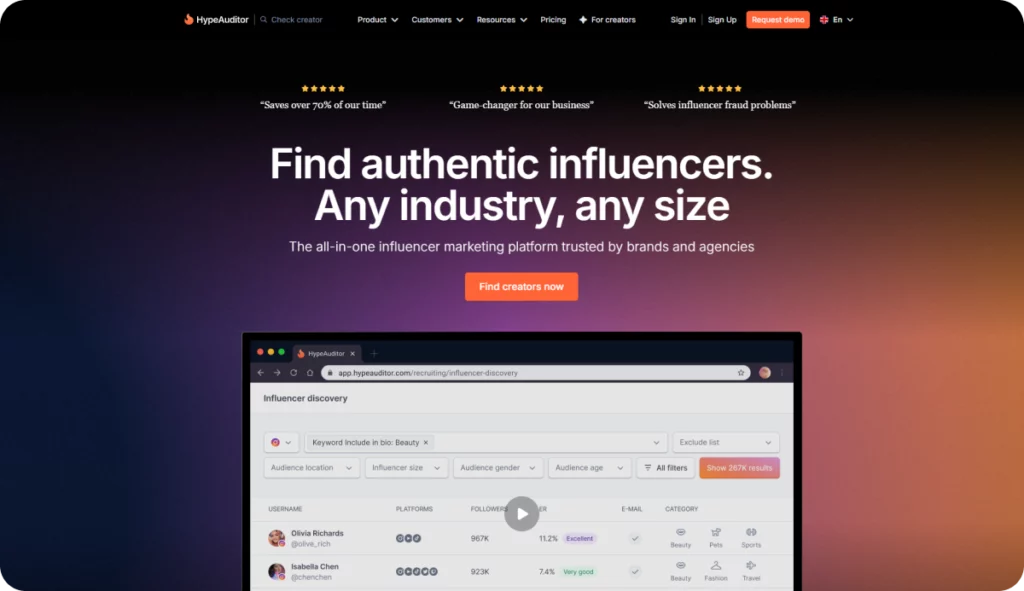
HypeAuditor excels at influencer and audience analysis, making it ideal for brands tracking competitors on Instagram and TikTok. This platform uses AI to evaluate influencer authenticity and engagement rates, helping you assess competitor reach and impact.
It also provides detailed insights into follower demographics, audience quality, and content performance, allowing for smarter benchmarking. With customizable reports and trend tracking, you can stay ahead of your competitors and fine-tune your own influencer marketing strategy.
Key Features: Analyzes influencer authenticity, audience demographics, and engagement rates.
Pricing: Starts at $399/month; free trial available.
3. Phlanx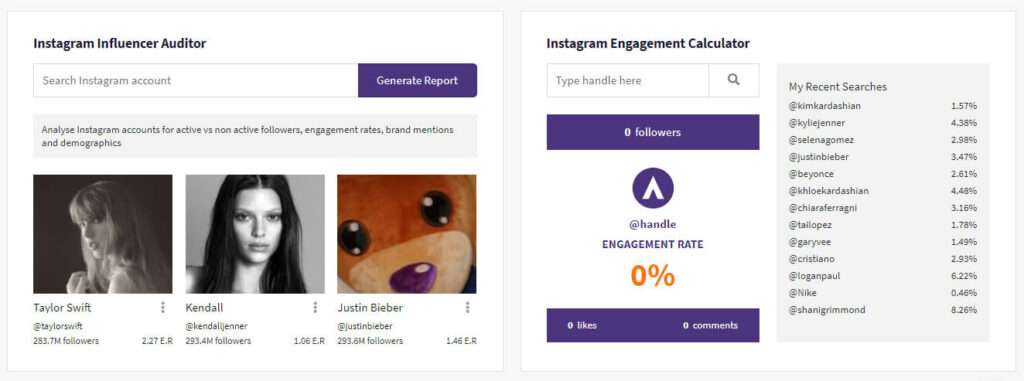
Phlanx is great for e-commerce brands, offering Instagram competitor analysis tools and TikTok tracking. It provides detailed Instagram competitor analysis tools and monitors engagement rates, follower growth, and influencer collaborations.
You can also access influencer contract templates and campaign tracking features, making it easier to manage partnerships. Its user-friendly dashboard simplifies performance comparison, helping you spot opportunities and gaps in your competitors’ strategies.
Key Features: Monitors follower growth, engagement, and ad performance; includes influencer marketplace.
Pricing: Starts at $25/month; free tools available.
4. Hootsuite
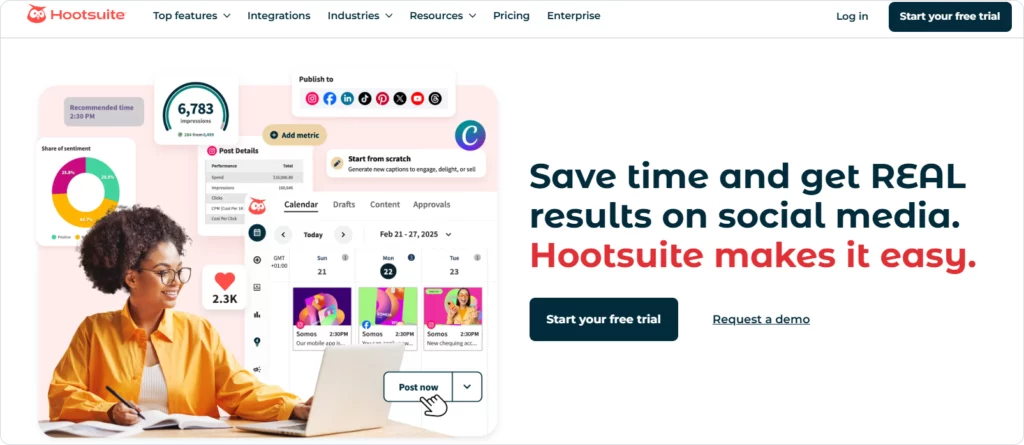
Hootsuite is a robust platform for enterprises needing social media analytics tools for competitor research. It offers detailed content benchmarking, post-performance comparisons, and customizable dashboards for a full competitor content audit.
You can align your strategy with market movements with real-time trend tracking and scheduling integration. Hootsuite also supports team collaboration, making it easier to coordinate efforts across departments for a unified competitive edge.
Key Features: Offers benchmarking, content analysis, and team collaboration tools.
Pricing: Starts at $99/month; free trial available.
5. Buffer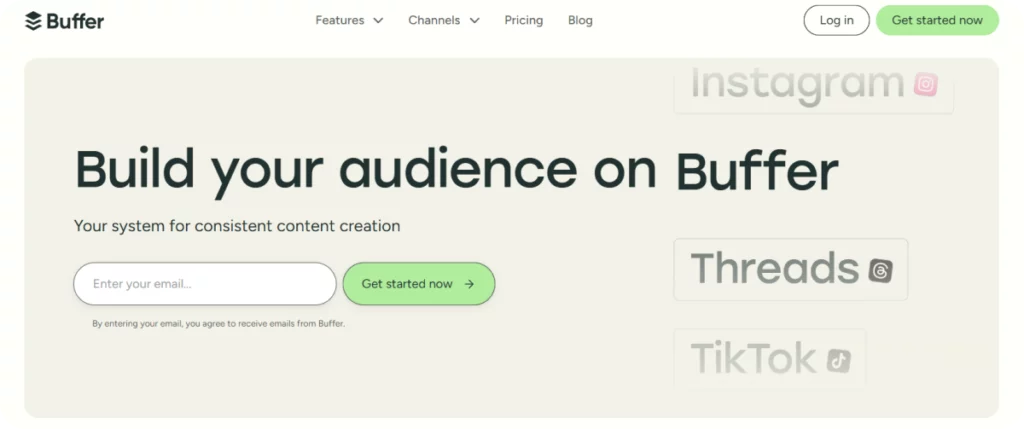
Buffer is perfect for freelancers and small teams looking for simple competitor social media tracking tools. It’s easy to use and provides clear insights into what your competitors post, how often, and how much engagement they get.
You can also track performance trends over time and compare your metrics side by side with competitors. Its intuitive interface and affordability make it a great choice for those new to social media analytics.
Key Features: Tracks engagement, post performance, and basic competitor metrics.
Pricing: Starts at $6/month per channel; free plan available
Best Tools for Social Media Competitor Tracking in 2025
Here’s a quick comparison table for the Social Media competitors for 2025, so you can easily see what each tool offers and which might be best for your needs:
| Tool | Best For | Key Features | Pricing |
|---|---|---|---|
| SocialBu | Small businesses & content teams | AI insights, real-time hashtag & mention tracking, post scheduling, team collaboration | Starts at $8/month; free plan available |
| HypeAuditor | Influencer & audience analysis | AI influencer audits, audience demographics, TikTok & Instagram tracking | Starts at $399/month; free trial available |
| Phlanx | E-commerce & influencer marketers | Engagement analysis, follower growth tracking, influencer marketplace, ad performance | Starts at $25/month; free tools available |
| Hootsuite | Large teams & enterprises | Content benchmarking, analytics dashboard, team workflows, multi-platform monitoring | Starts at $99/month; free trial available |
| Buffer | Freelancers & small marketing teams | Post-performance tracking, basic competitor metrics, simple dashboard | Starts at $6/month per channel; free plan available |
Conclusion
You now have the tools, steps, and framework to track competitor social media like a pro. Social media competitor analysis isn’t just about keeping up—it’s about staying one step ahead. By monitoring competitors on social media, you can refine your competitor social media strategy, boost engagement, and grow your brand faster.
Start small: pick one competitor, use a tool like SocialBu to monitor their campaigns, and test one new tactic, like posting at their peak times. Dive in, track competitor hashtags and mentions, and watch your social media game level up.
Ready to stop guessing and start growing? Take control of your social presence with data-backed moves. Start your SocialBu trial today.
FAQs
How Competitors Get Engagement On Social Media
To track competitors’ social media in minutes, use social media competitor tracking tools like SocialBu or Buffer. These platforms offer dashboards to monitor competitor posts and engagement and track competitor hashtags and mentions in real time.
How to Do a Competitor Analysis on Social Media
To do a competitor analysis on social media, identify your competitors, track their social media accounts, and analyze their content, engagement, and advertising strategies. Look at their posting frequency, engagement rates, and content types to understand what works for them
How To Make A Social Media Competitor Analysis
To make a social media competitor analysis, follow these steps:
- Identify competitors and their social media accounts.
- Track their content, hashtags, and engagement metrics.
- Analyze their advertising strategies and ad creative.
- Compare their performance with yours.
- Identify gaps and opportunities to improve your social media strategy.
How to Track Competitors on Social Media in Minutes
You can track competitors on social media quickly using tools such as SocialBu. Set up a dashboard or track keywords and hashtags related to your competitors. This will provide insights into content, engagement, and mentions, allowing you to monitor their activity
